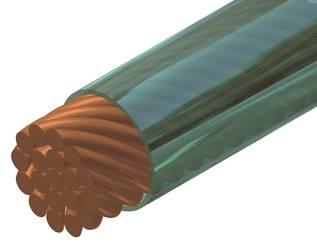Most designers agree that the skin effect and the interaction between strands are the greatest sources of sound degradation in wires.
In a wire with a high skin effect, the high-frequency signal flows primarily along the surface of the conductor, rather than through the center of the conductor.
This occurs in both solid core and stranded conductors. The skin effect changes the characteristics of the wire at different depths, causing different frequency ranges of the audio signal affecting the sound of the wire differently.
Musical consequences of skin effect include loss of detail, reduction of airiness in the upper octave, and truncation of stage depth.

One of the techniques to combat the skin effect is the Litz construction, which simply means that each conductor is coated with an insulating material to prevent it from coming into electrical contact with the wires around it.
Another technique is to arrange several wires by twisting them around a dielectric.
These are just a few of the techniques designers use to produce better-sounding cables.






